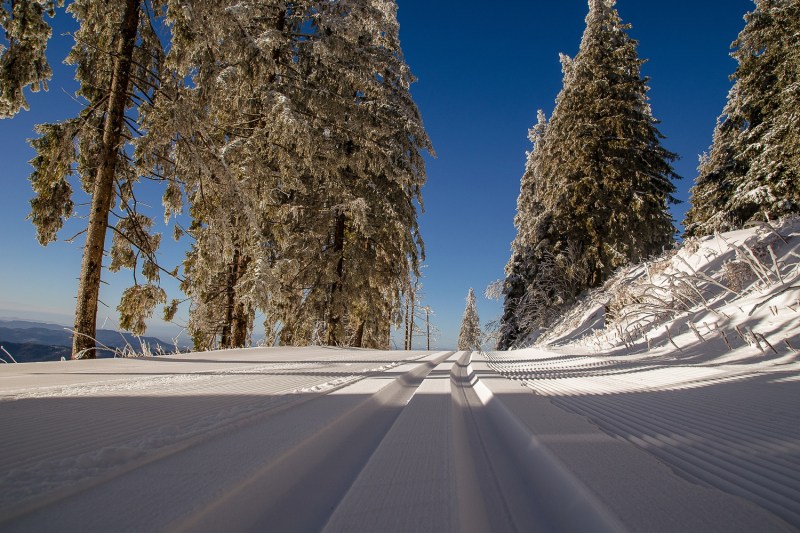It seems that when the thermometer starts dipping below freezing that our motivation to get outside and train takes a nosedive.
No matter if you’re training for a spring marathon or your fitness goals are of a more wintry variety, knowing how the take on the cold and snow will help you keep your fitness level through the winter. More importantly, it will keep you off the monotony of the treadmill.
In our pursuit of some backcountry skiing goals this season, we got in touch with the team at Summit Endurance Academy. With services ranging from monthly training, plans, full-time coaching, nutrition consulting, and sport specific technique for winter endurance sports, SEA is one of the premier cold weather sports training and coaching groups in North America. Owner Joe Howdyshell is a consummate endurance junkie, having competed at the collegiate and professional level in cross-country skiing. Following a grad degree in Exercise Physiology and a string of podium finishes at major cross-country and ski-mountaineering races, Joe is the head coach of the United States Ski Mountaineering Association National Team. We caught up with him for some beginner’s gear tips for fighting off the cold so you can keep training in the great outdoors all winter long.

Winter Specific Underwear
We’re not talking long underwear here, but what you need to be wearing under it to protect your most important body parts. You may not think about it for a short 5k, but the cold will cut right through your running tights or outer softshell when you’re out in the winter. A pair of box-briefs with an insulated, windproof crotch like Terramar’s Wind Boxer ($20) or Saucony’s Windproof Boxer Brief ($30) will keep you warm. Trust us, this will save you a lot of time and pain.
Acclimate Your Lungs
When you’re working hard in extreme cold (temperatures below -4°F), the stress on your lungs is exacerbated exponentially. Exercise induced asthma can shut your training session down before you get warmed up. To combat this, grab your favorite Buff. These microfiber neck tubes are useful in a variety of situations. For winter training, throw it on over your mouth and nose for at least 5-10 minutes while you warm up. The fabric will absorb some of the excess heat from exhaling, and help warm incoming air – giving you the time to more adequately adapt to the cold air hitting your lungs.
Mittens
Joe put it this way to us, “suck up your pride and buy some F#©&ing mittens”. You don’t have go out and get a pair of expedition weight down mittens and wear them all the time, but having warm fingers is more than just a morale play. If you’re in ski boots, numb fingers mean it will be nearly impossible to mess with buckles and bindings. If your complaint is that mittens make fine motor skills harder, well so does frostbite.
Accept The Cold
When you’re first getting warmed up, it’s OK to be a little cold. If you walk outside to go for a run and you are warm, you’ll be sweating in five minutes, and cold and wet in forty-five. Joe typically is in a baselayer and softshell all the down to -15°F if he’s working hard. You’d be surprised how much heat your body can put out. Use it to your advantage and layer properly. You can always through your favorite puffy jacket or fleece in your pack for rest stops.
Keep Water From Freezing
In the cold your usual narrow topped sport bottle can freeze quickly. Joe recommends using a wide mouth bottle, and carrying them upside down if you can. Water freezes from the top down, so turning you bottles upside down in your pack will keep the lid or spout ice free as long as possible. If you using a hydration bladder, make sure you blow air in the tube after every sip, and tuck the bite valve in your clothes to prevent it from freezing solid.



